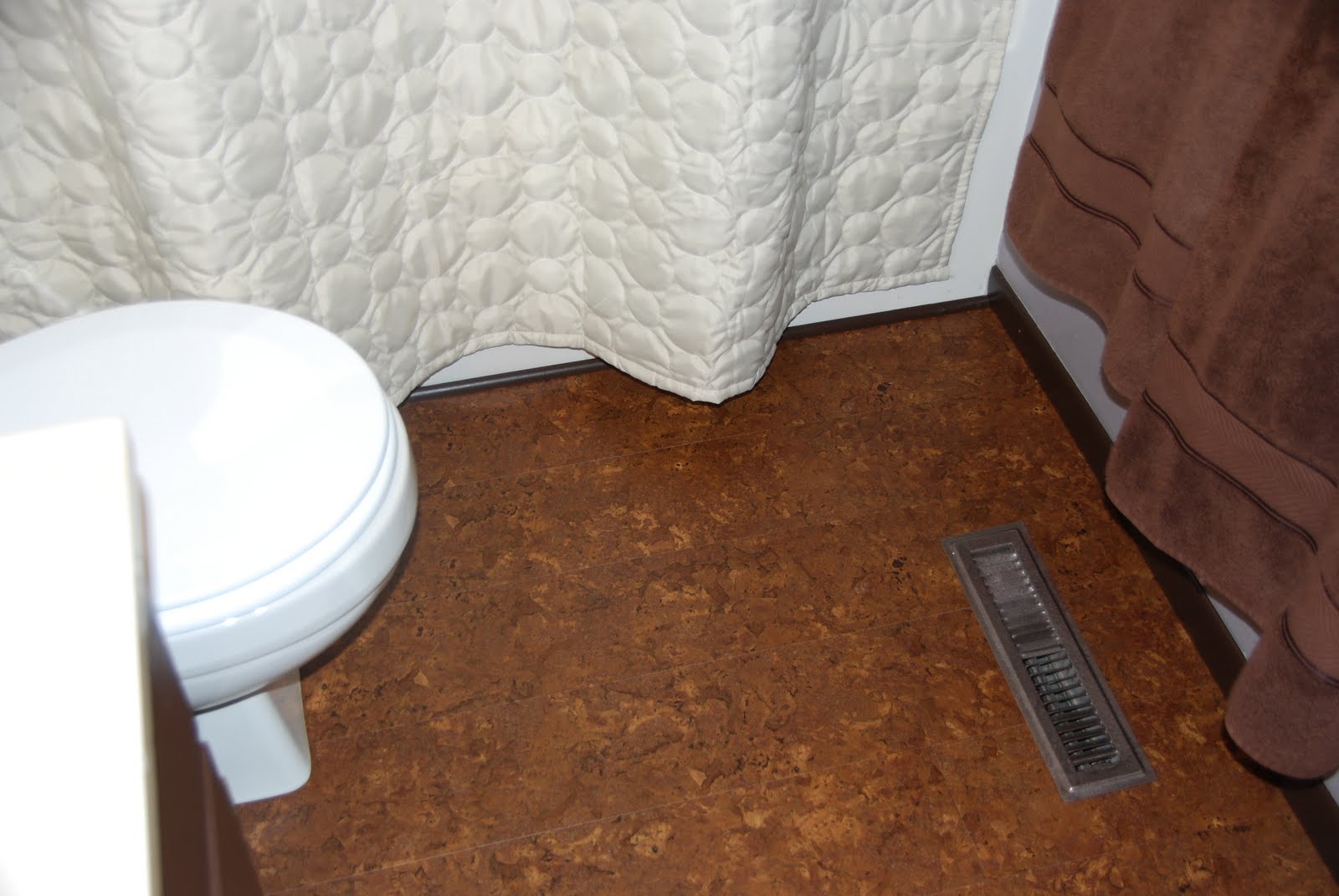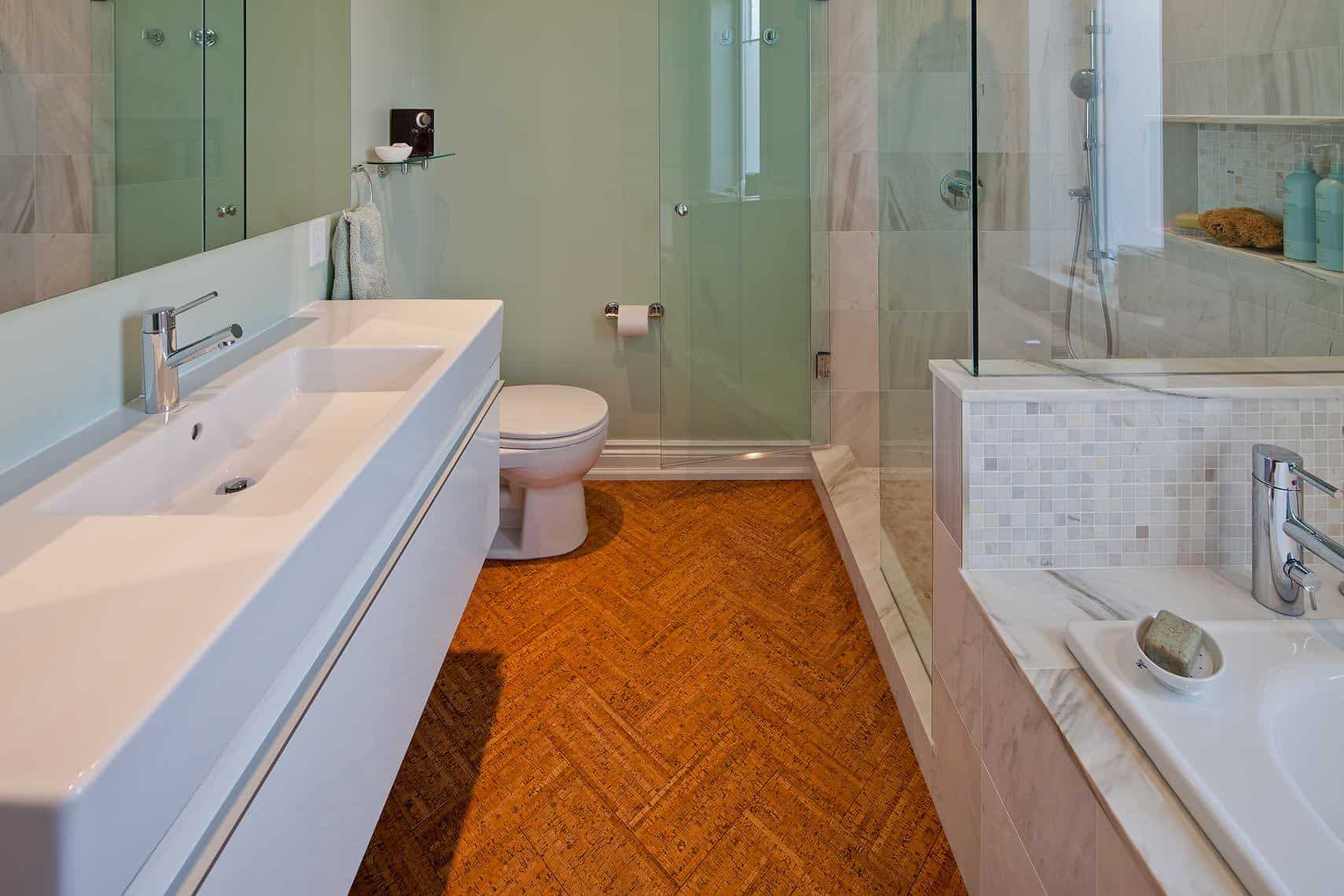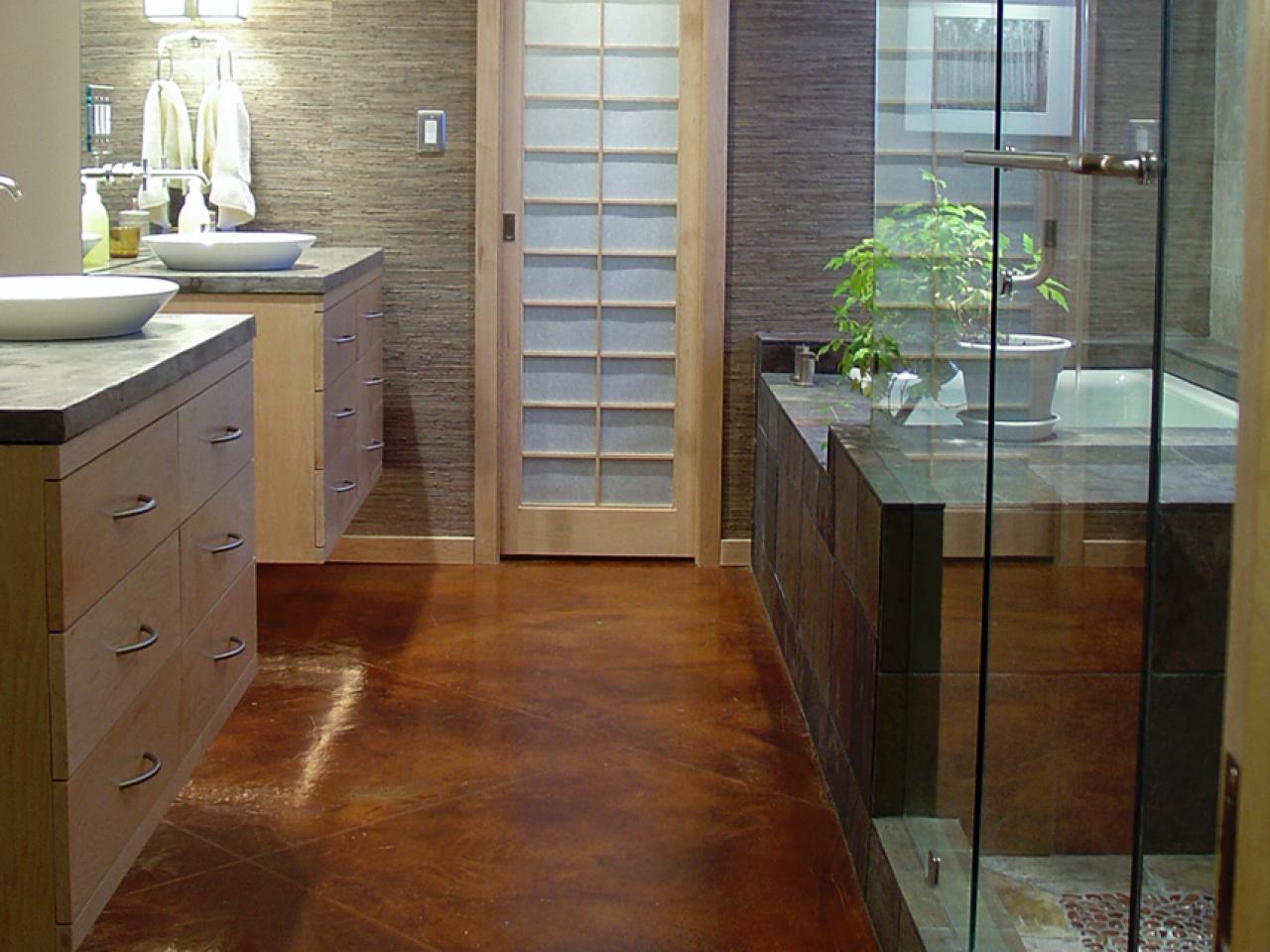Cork Bathroom Flooring: Cork Bathroom Flooring Options

Cork flooring has gained popularity in recent years, particularly for bathroom spaces. Its unique properties and eco-friendly nature make it a compelling alternative to traditional flooring options.
Sustainability of Cork Flooring, Cork bathroom flooring options
Cork flooring is a sustainable choice, derived from the bark of the cork oak tree, a renewable resource that grows naturally in the Mediterranean region. Cork harvesting is a sustainable practice that does not harm the tree, as the bark regenerates naturally every 9 to 12 years. This natural cycle ensures that cork production can continue indefinitely without depleting the resource.
Cork is also biodegradable, meaning it decomposes naturally over time, unlike many synthetic materials that contribute to landfill waste. The production of cork flooring has a significantly lower environmental impact than other flooring options, such as tile, wood, and vinyl.
Environmental Impact Compared to Other Bathroom Flooring Options
- Tile: Tile production requires significant energy consumption and releases greenhouse gases. The manufacturing process involves high temperatures and the use of fossil fuels. Tile is also a non-renewable resource, and its disposal can be problematic.
- Wood: While wood is a renewable resource, its production can contribute to deforestation and habitat loss. The manufacturing process also involves energy-intensive steps, such as cutting, drying, and finishing. Wood flooring can also be susceptible to moisture damage, which can lead to warping, rotting, and the need for replacement.
- Vinyl: Vinyl flooring is made from polyvinyl chloride (PVC), a synthetic material derived from petroleum. The production of PVC releases harmful pollutants and contributes to air and water pollution. Vinyl flooring is also non-biodegradable and can leach chemicals into the environment over time.
Properties of Cork Suitable for Bathrooms
Cork’s unique properties make it an ideal choice for bathrooms. Cork is naturally water-resistant, making it a suitable flooring option for areas prone to spills and splashes. It is also mold and mildew resistant, preventing the growth of these harmful organisms in humid environments.
Cork is a natural sound absorber, reducing noise levels in the bathroom. This is especially beneficial in multi-story homes or apartments, where bathroom noise can travel easily.
Cork is also a comfortable and warm material underfoot, adding a touch of luxury to the bathroom. It is also naturally anti-slip, providing a safe surface for walking.
Types of Cork Bathroom Flooring

Cork flooring is a natural and sustainable option for bathrooms, offering a range of benefits like warmth, comfort, and noise reduction. It’s available in various types, each with its unique characteristics, making it crucial to choose the right type based on your specific needs and preferences.
Types of Cork Flooring
Cork flooring for bathrooms comes in three main types: sheet cork, tile cork, and click-lock cork. Each type offers unique advantages and disadvantages, influencing its suitability for different bathroom environments.
- Sheet cork is a large, continuous sheet of cork that is glued to the subfloor. It’s a popular choice for bathrooms due to its seamless appearance and affordability. Sheet cork is typically thicker than other types of cork flooring, providing a more substantial feel underfoot.
- Tile cork is available in various sizes and shapes, offering design flexibility. These tiles are typically glued to the subfloor, providing a durable and long-lasting flooring solution. Tile cork can be used to create intricate patterns and designs, adding a unique touch to the bathroom.
- Click-lock cork is a relatively new type of cork flooring that features a click-lock system for easy installation. It’s similar to laminate flooring, offering a floating installation without the need for glue. Click-lock cork is known for its ease of installation and its ability to be installed over existing floors.
Comparison of Cork Flooring Types
The following table provides a detailed comparison of the different types of cork flooring, highlighting their pros and cons in terms of installation, durability, and aesthetics:
| Type | Installation | Durability | Aesthetics |
|---|---|---|---|
| Sheet Cork | Requires glue, more time-consuming | Durable, but susceptible to water damage if not properly sealed | Seamless, classic look |
| Tile Cork | Requires glue, can be time-consuming | Durable, water-resistant with proper sealing | Versatile, can create patterns |
| Click-Lock Cork | Easy installation, floating floor | Durable, water-resistant with proper sealing | Modern look, various colors and finishes |
Cork Bathroom Flooring Installation and Maintenance

Installing cork bathroom flooring is a relatively straightforward process, but it requires careful planning and execution to ensure a long-lasting and water-resistant finish. This section will provide a step-by-step guide for installing cork bathroom flooring, highlight the necessary tools and materials, and discuss the best cleaning and maintenance practices for preserving its beauty and functionality.
Cork Bathroom Flooring Installation
Installing cork bathroom flooring requires specific tools and materials to ensure a successful and long-lasting installation. This process typically involves several steps, each requiring careful attention to detail.
- Prepare the Subfloor: Before installing cork flooring, it is essential to ensure that the subfloor is level, clean, and dry. Any cracks, gaps, or unevenness should be repaired. A smooth and even subfloor is crucial for a successful cork installation.
- Install a Moisture Barrier: A moisture barrier is essential to protect the cork flooring from moisture damage. A vapor barrier, such as polyethylene sheeting, should be laid over the subfloor to prevent moisture from penetrating the cork. Overlapping the seams by at least 6 inches ensures a complete seal.
- Install the Underlayment: An underlayment, such as a cork or foam underlayment, provides additional cushioning and insulation, improving the overall comfort and acoustics of the floor. This underlayment should be installed over the moisture barrier and secured to the subfloor with staples or adhesive.
- Install the Cork Tiles or Planks: Cork tiles or planks are available in various sizes and styles, allowing for customization to suit different bathroom designs. The installation process involves carefully laying the tiles or planks, ensuring that they are flush and level with each other. Use a tapping block and rubber mallet to gently tap the tiles or planks into place.
- Secure the Tiles or Planks: Once the tiles or planks are in place, they should be secured to the subfloor. This can be done using a cork adhesive or a click-lock system, depending on the type of cork flooring.
Sealing and Finishing Cork Bathroom Flooring
Sealing and finishing cork bathroom flooring are crucial steps in protecting the flooring from water damage and enhancing its durability. Proper sealing ensures that the cork remains resistant to moisture, stains, and scratches.
- Apply a Primer: Before applying the sealant, it is essential to apply a primer to the cork flooring. This creates a barrier between the cork and the sealant, ensuring that the sealant adheres properly.
- Apply a Water-Based Sealant: A water-based sealant is the best choice for cork bathroom flooring. This type of sealant penetrates the cork, creating a protective barrier against water and stains. It is crucial to apply the sealant in thin, even coats, allowing each coat to dry completely before applying the next.
- Apply a Top Coat: Once the sealant is dry, a top coat can be applied to enhance the durability and appearance of the cork flooring. A polyurethane or acrylic top coat provides additional protection against scratches and wear.
Cleaning and Maintenance of Cork Bathroom Flooring
Regular cleaning and maintenance are essential to preserve the beauty and functionality of cork bathroom flooring. Following proper cleaning and maintenance practices will ensure that the cork remains water-resistant, stain-free, and aesthetically pleasing.
- Sweep or Vacuum Regularly: To remove dust, dirt, and debris, sweep or vacuum the cork bathroom flooring regularly. Avoid using a vacuum with a beater bar, as this can damage the cork surface.
- Clean Spills Immediately: If any spills occur, clean them up immediately to prevent staining. Use a damp cloth and a mild detergent to clean the spill. Avoid using harsh chemicals or abrasive cleaners, as these can damage the cork.
- Mop Occasionally: For a deeper clean, mop the cork bathroom flooring occasionally using a damp mop and a mild cleaning solution. Avoid using too much water, as this can damage the cork.
- Apply a Sealant Periodically: To maintain the water resistance and durability of the cork flooring, apply a sealant periodically. This will help to protect the cork from moisture, stains, and wear. The frequency of sealant application will depend on the level of traffic and the type of sealant used.
Cork bathroom flooring options offer a unique blend of warmth, comfort, and durability. When planning your bathroom layout, it’s essential to consider the flow of traffic and the placement of fixtures. Floor plan bathroom layout designs can help you optimize space and create a functional and stylish bathroom.
With its natural resilience and moisture resistance, cork flooring can complement a variety of bathroom layouts and create a spa-like ambiance.
Cork bathroom flooring offers a unique blend of warmth, comfort, and sustainability. While its natural properties make it a popular choice, some homeowners may prefer the durability and water resistance of vinyl plank flooring. For those seeking a stylish and practical option, installing Lifeproof vinyl plank flooring in the bathroom can be a great alternative.
However, cork’s natural beauty and eco-friendly nature remain appealing for those prioritizing a sustainable and comfortable bathroom experience.